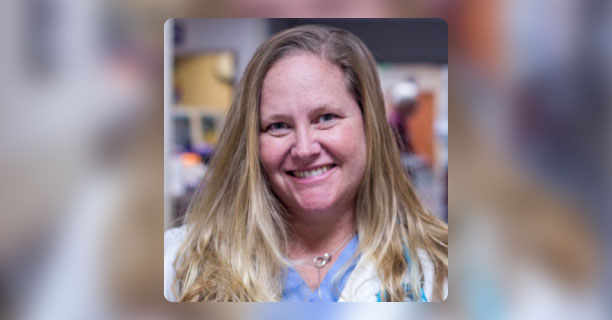Rob Mechanic, Executive Director of the Institute for Accountable Care
Dr. Mark Prather is a board-certified emergency physician who founded Dispatch Health in 2013. Last year, Dispatch Health provided on-demand home visits to nearly 100,000 patients in 10 major metropolitan areas. Rob Mechanic, Executive Director of the Institute for Accountable Care, recently interviewed him about his work for the Playbook.
Q: What inspired you to start Dispatch Health?
A: I spent 20 years practicing emergency medicine and managing large ER staffing companies. Over that time, I have seen significant cost increases for the services that I once provided. I became increasingly convinced that our facility-based care model was pricing itself out of existence and that we could safely move more care to lower-cost settings to reduce the cost of caring for acute medical conditions.
There’s also a growing body of clinical research showing that in-home care is safe and may actually be more efficacious for certain populations. We now have tools that make bringing hospital-level care to the home a reality, such as mobile laboratories, ultrasounds on an iPad, and remote patient monitoring.
Q: If someone who is having a serious medical problem calls Dispatch Health instead of 911, what happens?
A: Patients can access Dispatch Health through a smartphone app, through our website, or with a good old-fashioned phone call. The patient is screened by our call center agents, using a proprietary screening tool. The goal is to make sure that the case is appropriate for our services and doesn’t require an emergency room. If the patient’s condition is appropriate for us to treat, a care team is assigned consisting of a board-certified ER physician, who is virtual, and a mobile team comprising a nurse practitioner or physician assistant, who are the on-scene caregivers, and an EMT or medical assistant, depending on the state regulatory environment.
Our providers arrive with the ability to perform laboratory studies at the bedside, perform diagnostic tests like EKGs, infuse IV medications for a variety of conditions like pneumonia, asthma, migraine, and severe nausea. They can also do procedures like catheter placement, opening and draining abscesses, replacing gastrostomy tubes, and repairing complex lacerations.
Once the visit is complete, our goal is to coordinate with that patient’s existing care team. We make sure that the data from our visit is sent back to the primary care provider or their care management team. We follow up with the patient at 3 days, 14 days, and 30 days, to ensure that the care plan is being followed, and that the patient hasn’t had setbacks along the way.
Q: It sounds like you can do more in the patient’s home than an EMT or even a house call physician.
A: The model is structured to safely deliver high-acuity care. An EMT has a limited scope of practice, as you know, and can only act on a set of guidelines written by a physician. We send independent practitioners into the home who can both diagnose and treat, with the backup of a board-certified emergency physician. They are supported by a technology platform that integrates other sources of data about the patient that helps them to make the best decisions.
Q: So, who are Dispatch Health’s customers?
A: 50 to 60 percent of our volume is from the senior market, about 30 percent comes from the commercial market, and then the remainder, and probably a growing percentage, is Medicaid. Some patients call us directly, but the majority are referred to us through partnerships with at-risk providers, care management groups, home health, and senior living partners.
Q: Could you give a few examples of your bigger clients?
A: We work with several health systems that are working to manage populations under risk contracts. Examples would be the Bay State Health System in Springfield, Massachusetts, the MultiCare Health System in Tacoma, Washington, and Texas Health Resources in Dallas.
Q: How would a patient know this service is available and what would spur them to call you?
A: Their call may be prompted by a care manager, a home health nurse, or a primary care physician from a group that works with us. We also directly market the service to some degree, to make sure that patients are aware that it’s available.
Q: What does a visit cost, and how does Dispatch Health get paid?
A: We’ve developed a very efficient low-overhead model so that we can provide a high-acuity intervention for $250 to $350 per patient, on average. We are an in-network benefit with most major insurance companies, and many of the local payers as well.
Q: In addition to providing health care services you also have said that Dispatch Health is a software company. How does the software enable the services you provide?
A: The model really couldn't work without the software, frankly. It performs several functions, including what we used to call the “front office in the field” functions. That’s everything from registration to consent, to eligibility, to price transparency. The software also includes risk stratification and clinical logistics. It’s complicated to get multiple mobile resources to the right patients at the right time. We’ve built a sophisticated logistics model that takes into account everything from distance, to traffic, to disease acuity. We have also built in clinical integration. It’s very important for us to partner effectively with risk-bearing provider groups by sharing data with them.
We can also build in referral logic to conform with the network arrangements of our payer partners, for example sending bloodwork to their preferred labs. We also can support customized care planning if a partner wants us to have access to certain information about a patient ahead of time. The platform is built to gather structured data and feed valuable descriptive analytics back to our risk-bearing partners.
Q: When you complete a visit from a patient referred by a risk-bearing primary care group, how do you get the information back to them?
A: It depends on where we are in the country. We’re in 10 markets and all of them have varying degrees of infrastructure. We do, in many instances, connect and transfer information directly into their EMR or care management system. In some states, we push information into a health information exchange that notifies the group. The worst-case scenario is digitally faxing the information but we’re doing that less and less.
Q: You told me earlier that your teams screen all patients for social determinants of health. Why do you do that and what do you do with the information?
A: We realized early on that there were two major factors that contributed to reduced recidivism, which, for us, is defined as a return to the emergency room after they’ve seen us. The things that we can do to reduce recidivism rate are first, to coordinate effectively with the patient’s primary caregivers, and second, to identify and intervene on social factors that appear to be contributing to the patient’s health problems.
The software supports our caregivers in screening for social determinants and we catalog the findings. Increasingly, we are finding partners in each market who can help address the problems we’ve found. Being in the patient’s home, we can identify issues that that may not come out in a survey or a clinic visit, and then activate the necessary service providers to address the situation. That capability varies, again, across the country, but we are building out a partnership group.
Q: You’re working directly with community-based organizations that provide or coordinate social services?
A: That’s right. As you probably know, there are companies that are starting to build infrastructure to address social determinants of health. Some of our payer partners have partnerships with these groups and so we work with them.
Q: You started the company in Colorado and now you operate in 10 markets?
A: In addition to Colorado, we operate in Phoenix, Las Vegas, Houston, Dallas, Oklahoma City, Tacoma, Richmond, Virginia, Springfield, Massachusetts, and soon Bergen County, New Jersey. This year, we’ll deliver care to about 100,000 patients.
Q: What is your vision for the future of the business?
A: We’ve embarked on a journey to create an entire system of care in the home, capable of delivering high-acuity services to support patients across the care continuum. We started with what we felt was the most challenging aspect of that goal, which is on-demand, high-acuity interventions. By creating a logistics platform capable of delivering on that model, we feel like we’re in an excellent position to extend the care model into longer-term, episodic interventions for individuals requiring more extended high-acuity care. We’re also focused on the data and collecting information that can help others manage populations better. We’re working on predictive models that I think are going to be very valuable in the future.
Q: Are there state or local regulatory issues that make it easier or more difficult to operate your service?
A: To some degree. However, we are a variation of the oldest physician visit, the house call, which is a model that works everywhere. There are nuances in regulatory requirements that vary by state. For instance, we use advanced practice providers, and the oversight of those providers varies slightly state by state. However, we’ve gotten good at understanding those regulatory nuances, and at this point we don’t see a geography that we couldn’t enter with our model.



